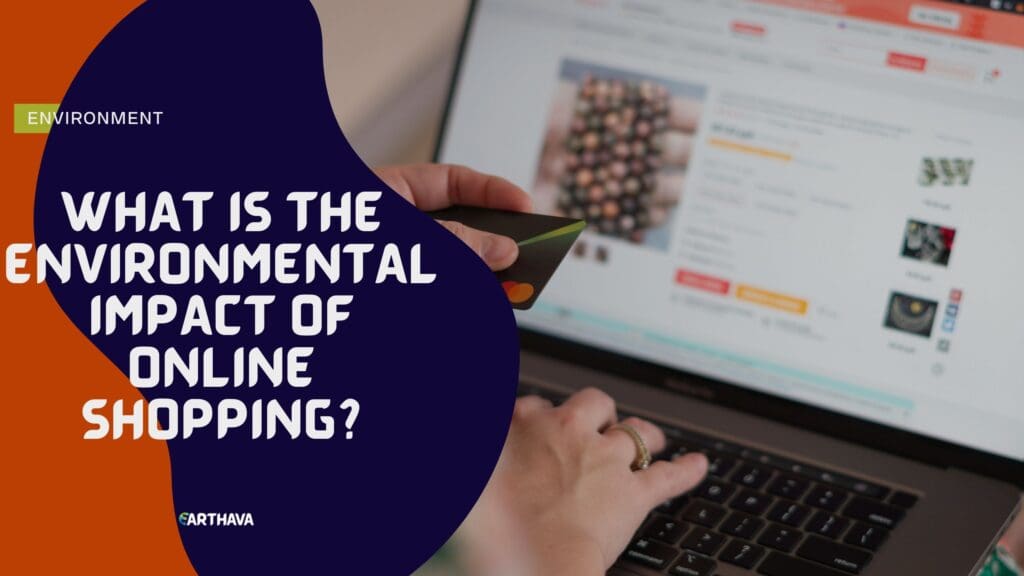From online education to telecommuting, the Internet offers convenient alternatives to traditional brick-and-mortar businesses. While this may have both positive and negative effects on the environment, it’s not always easy to see the far-reaching effects of online versus in-person transactions. Being an educated consumer will help you weigh the environmental effects of your purchases and make a sound decision when choosing where you are spending your money.

Is Online Shopping Hurting or Helping the Environment?
It’s important to carefully consider the pros and cons of both in-store and online shopping in terms of sustainability. For those who live in rural areas devoid of box stores and shopping malls, online shopping was a much-appreciated development. For the general public, access to any item that you desire at the click of a button seemed just too good to be true.
Despite the convenience and growing number of options for online shopping, brick-and-mortar stores still play a major role in people’s buying habits for several reasons. In a recent study, seven different types of shoppers were identified and analysis of the carbon footprint of each type was evaluated. The results show overall that online shopping has less of a carbon footprint than physical sales. However, several variables can influence a shopper’s environmental impact, including elements such as returning unwanted items.
Online retailers have the advantage of using new technologies and optimized shipping routes that reduce their freight carbon emissions. Online retailers also are not subject to maintaining store hours that include electricity use when there are no customers to purchase products. Brick-and-mortar businesses appeal to eco-conscious urban shoppers who can use public transportation for both purchases and returns, cutting back on carbon emissions. Brick-and-mortar can also use its storefronts to provide for consumer pickup for online purchases, reducing packaging and transportation.
Keep these variable factors in mind and assess your purchasing habits to minimize your environmental impact. If you live in a rural area and do not use public transportation, online purchasing is an eco-friendly means of making your purchases. To further lessen your carbon footprint, purchase from retailers that enable you to bundle your purchases to reduce the amount of packaging used during transit. If you live in an urban area, weigh your options about the item and how much of that item you are purchasing to make the best-informed decision.
Where Your Next Meal Is Coming From
From online grocery shopping to prepared meal kit services, the internet is changing how we bring food into our homes. The evolution of grocery stores can be attributed to the amount of food waste that occurs in the United States. Food is cheaper per calorie in the United States than anywhere else in the world. This leads us to be quick to refuse to produce with the slightest bruise, ding, or discoloration, and anything we feel has sat in our refrigerators too long.
A report from the meal service provider Blue Apron reveals that 10.5 percent of food in grocery stores never makes it to the retail floor. In comparison, Blue Apron only sees about 5.7 percent of waste prior to reaching their customers. Alternatively, for those who live in food deserts where fresh food is scarce, the focus should be redirected to less on food waste and more on the packaging of single-use items.
Meal boxes are customized and pre-portioned to make sure their customers are satiated but are not stuck with leftover ingredients. The argument can be made that the packaging associated with single-use items increases its environmental impact. However, many of the meal kit providers offer the ability to return packaging to be reused and encourage repurposing the boxes they provide.
With over 150 different online food providers, there is a wide variety of options to choose from and many factors to keep in mind before you confirm your order. If you intend to be a sustainable consumer in terms of your online food purchasing, do your research as to which companies are working towards reducing their environmental impact.
Evolution of the Classroom
Technology development has significantly changed students’ educational experiences. Physical textbooks and handwritten papers are nearly non-existent in the classroom, starting as early as in elementary school. Implementing tablets and SMART boards creates ease of access to information for the students and a reduction in the time that educators use to hand-grade assignments.
The production of such technologies, however, comes with a price that is not always monetary. The mining of precious metals to manufacture tablets and smartphones leaves scars on the landscape. The cost of production is at the expense of polluting our water, air, and land. However, it is the price we pay to continue to develop in our technological age.
Along with the evolution of modern devices, many students are seeking an online college education, at least for part of their coursework. With many college students working full- or part-time, taking classes online has become more of a necessity than a choice. The rising costs of admission have academic institutions seeking ways to reduce costs for their students, such as not maintaining a physical classroom.
For some, removing the human interaction you receive by attending a class in person cannot be quantified in monetary terms. Luckily, the advancements in technology enable students to have face-to-face time with their professors via online video conferencing. Although online learning is not an option for all degree programs, such as those that require lab work or logging physical hours of tech work, it could be viable for some.
There are many hidden environmental effects on online alternatives that are not always immediately apparent. However, both physical storefronts and online retailers possess their setbacks. Being an educated consumer requires additional time to research how products are manufactured and assess the corporate social responsibility of the companies that we are interested in purchasing from. The additional effort is rewarded with being assured that we are investing in companies that have practices that align to make a minimal environmental impact.


